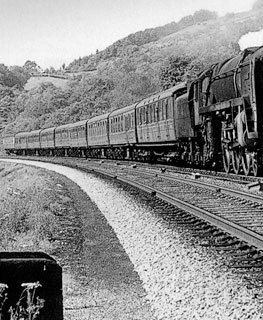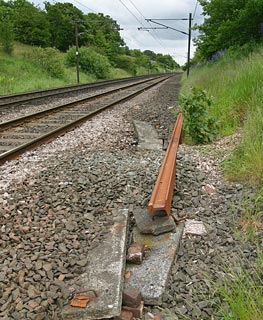When is a cess not a cess?
Having worked trackside for years, I thought I knew what a cess was. Finding the official definition for the term would, I assumed, be easy.
Google is not very helpful. CESS, it suggests, is the “Centre for Experimental Social Science” at New York University. Google Maps offers “Suck-Cess Drainage Services”, a company in Farnham.
On-track workers used the cess, when available, to transport themselves and equipment along the railway out of harm’s way. Drivers found it the ideal route to get from engine to trackside phone.
Nowadays P-Way renewals deposit ballast, scrap and equipment there. Tree fellers make the most of it as a compost heap. The OHL department obstructs it with their masts. Planners specify it on forms as a position of safety for COSSs working red zone.
So what is the planner’s understanding of ‘a cess’?
 |
|
 |
| A typical cess of yesterday |
|
A typical cess today |
The Rule Book simply says that it is “the space alongside the line or lines”. Accompanying diagrams show it as a clear way. It does not give dimensions but indicates that you can be “on or near the line” while standing in the cess.
But according to the Rail Accident Investigation Branch - an independent unit within the Department for Transport - the cess is “The part of the trackbed outside the ballast shoulder that is deliberately maintained lower than the sleeper bottom to aid drainage”. This definition was apparently supplied by Ellis British Railway Engineering Encyclopedia.
(Source: glossary of report into a near miss at Tinsley Green, published December 2007)
Has anybody in the industry realised the responsibility it has to maintain the cess for this purpose? Network Rail would seem to have a big problem if this definition is to be believed. Firstly a huge percentage of the cess is not below sleeper level and would therefore be of no help with drainage. Secondly, on many parts of the network, this part of the trackbed is not maintained at all, either deliberately or otherwise.
You’d think that a position of safety was rather easier to put into words. But, again, RAIB has found a different definition to that in the Rule Book. Our railway bible states that you are in a position of safety if there is at least the distance shown below between you and the nearest rail of any line on which a train can approach.
|
Speed/mph
|
Distance
|
|
0-100
|
1.25metres (4 feet)
|
|
101-125
|
2 metres (6 feet 6 inches)
|
|
126+
|
2.75 metres (9 feet)
|
The lads just need to find the linespeed at their worksite and check if the requisite separation is available. If not, they will see a limited clearance sign telling them so…possibly!
This isn’t good enough for RAIB. Ellis clearly knows better. It suggests that you are in a position of safety if you are in “A place far enough from the track to allow a person to safely avoid being struck by passing trains.” Might that be 3 feet? Just 2 feet maybe?
As an aside, engineers will be delighted to know that RAIB has recently restored standard gauge to 4 feet 8½ inches after reducing it by half-an-inch at Tinsley Green. This small mistake - made in the office with all the other aides at hand - is still published online.
|
| Engineers will be delighted to know that RAIB has recently restored standard gauge to 4 feet 8½ inches... |
|
Neither the COSS nor the lookout man can make mistakes. To do so could prove fatal. So if we cannot believe definitions published by the railway’s accident investigators, what are we to believe?
RAIB should start using the Rule Book and stop confusing on-track workers. We already have a set of definitions - we don’t need another one. Particularly one that’s wrong.
Story added 1st July 2008

|